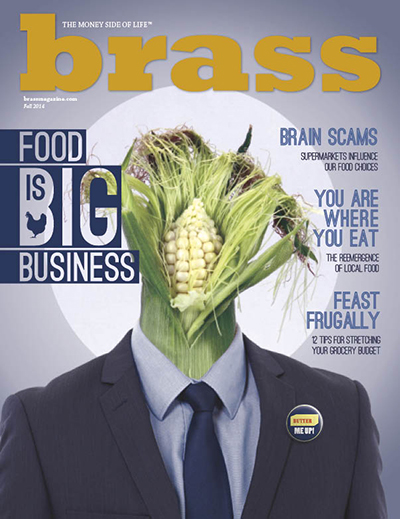From Farm to Fork: How the business of food affects young people

by. Matt Neznanski
Food in America is big business, and since we all have to eat, it sits right in the “needs” column of every budget. That’s why the August issue of brass is all about understanding the economics of food and how it affects our daily lives to help us regain control of our choices.
According to the U.S. Department of Agriculture (USDA), American agricultural sector contributed an added value of $471 billion to the U.S. economy in 2012, a figure that doesn’t include the retail and marketing costs associated with all the eating we do (see page 11). The story of food in America in the last century is of better and better productivity. Fewer people grow our food, we eat more calories, and all that abundance costs less now than a century ago.
Today, less than 1% of the U.S. population claim farming as an occupation, according to the U.S. Environmental Protection Agency, and that number is expected to continue to decline. However, the average daily number of calories we eat rose from 2,109 calories in 1970 to 2,568 calories in 2010, according to the USDA. Food prices have plummeted year after year as grocery stores expanded from specialty shops to supermarkets (see page 19). According to Forbes, Americans spent 21% of disposable income on food in the 1930s, 16% in the 1940s, and today spend less than 6%.
That’s a huge success story, but there are also problems. It’s no secret that despite this abundance, we’re not exactly healthy. According to U.S. Centers for Disease Control and Prevention, more than a third of adults in the U.S. were obese–more than twice the rate reported in 1980. Some, like best-selling food author Michael Pollan, blame this unhealthy boom on the agricultural industry’s love of corn. According to the USDA, corn made up 24% of all farm acreage from coast to coast in 2012. And, as taxpayers, we delivered $2.7 billion in government subsidies to corn-growers in 2012, more than a billion dollars more than the next most highly subsidized crop, according to the Environmental Working Group.
continue reading »